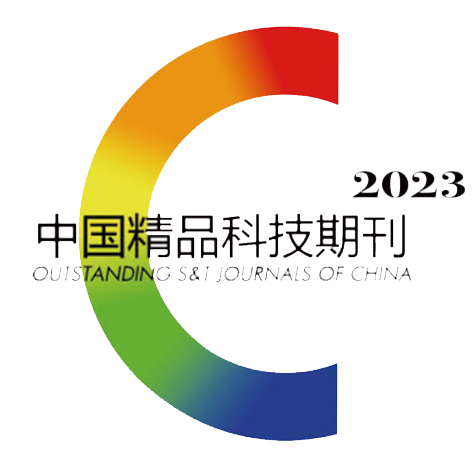| [1] |
|
| [2] |
陈玲, 周跃斌, 王准. 闷黄对黄茶品质形成的影响研究[J]. 茶叶通讯,2012,39(2):8−11, 16.
|
| [3] |
|
| [4] |
Gramza-Michałowska A, Kobus-Cisowska J, Kmiecik D, et al. Antioxidative potential, nutritional value and sensory profiles of confectionery fortified with green and yellow tea leaves ( Camellia sinensis)[J]. Food Chemistry,2016,211:448−454. doi: 10.1016/j.foodchem.2016.05.048
|
| [5] |
Horžić D, Jambrak A R, Belščakcvitanović A, et al. Comparison of conventional and ultrasound assisted extraction techniques of yellow tea and bioactive composition of obtained extracts[J]. Food & Bioprocess Technology,2012,5(7):2858−2870.
|
| [6] |
Wang Q, Zhao X, Yu Q, et al. In vitro antioxidative activity of yellow tea and itsin vivo preventive effect on gastric injury[J]. Experimental & Therapeutic Medicine,2013,6(2):423−426.
|
| [7] |
Hashimoto T, Goto M, Sakakibara H, et al. Yellow tea is more potent than other types of tea in suppressing liver toxicity induced by carbon tetrachloride in rats[J]. Phytotherapy Research,2007,21(7):668−670. doi: 10.1002/ptr.2132
|
| [8] |
Kujawska M, Ewertowska M, Adamska T, et al. Protective effect of yellow tea extract on N-nitrosodiethylamine-induced livercarcinogenesis[J]. Pharmaceutical Biology,2016,54(9):1891−1900. doi: 10.3109/13880209.2015.1137600
|
| [9] |
|
| [10] |
|
| [11] |
|
| [12] |
张明露, 彭玙舒, 尹杰. 不同闷黄时间和温度对黄茶品质的影响[J]. 耕作与栽培,2018(3):12−14.
|
| [13] |
|
| [14] |
李颖, 董玉惠, 张丽霞, 等. 不同闷黄方式对山东黄大茶品质的影响[J]. 中国茶叶加工,2015(3):23−27.
|
| [15] |
廉明, 吕世懂, 吴远双, 等. 顶空固相微萃取气质联用技术分析两种黄茶的香气成分研究[J]. 食品工业科技,2015,36(11):281−286.
|
| [16] |
|
| [17] |
Susanne S, Thomas H. Molecular definition of black tea taste by means of quantitative studies, tastereconstitution, and omission experiments[J]. Journal of Agricultural and Food Chemistry,2005,53(13):5377−5384. doi: 10.1021/jf050294d
|
| [18] |
辛董董, 张浩, 李红波, 等. 不同茶类挥发性成分中主要呈香成分研究进展[J]. 河南科技学院学报,2019,47(6):21−28.
|
| [19] |
滑金杰, 尹军峰, 袁海波, 等. 温州黄汤闷堆和闷烘工艺[J]. 江苏农业科学,2017,45(2):173−177.
|
| [20] |
许伟, 彭影琦, 张拓, 等. 绿茶加工中主要滋味物质动态变化及其对品质的影响[J]. 食品科学,2018,40(11):36−41.
|
| [21] |
|
| [22] |
周继荣. 鹿苑茶品质形成机理及机械化加工工艺研究[D]. 武汉: 华中农业大学, 2004.
|
| [23] |
Narukawa M, Kimata H, Noga C, et al. Taste characterisation of green tea catechins[J]. International Journal of Food Science & Technology,2010,45(8):1579−1585.
|
| [24] |
宛晓春. 茶叶生物化学[M]. . 北京: 中国农业出版社, 2003: 39.
|
| [25] |
|
| [26] |
Zeng L T, Watanabe N Yang Z Y. Understanding the biosyntheses and stress response mechanisms of aroma compounds intea(Camellia sinensis)to safely and effectively improve tea aroma[J]. Critical Reviews in Food Science and Nutrition,2018,2:1−14.
|
| [27] |
Zheng X Q, Li Q S, Xiang L P. et al. Recent advances in volatiles of teas[J]. Molecules,2016,21(3):338−349. doi: 10.3390/molecules21030338
|
| [28] |
HoC T, Zheng X, Li S M. Tea aroma formation[J]. Food Science & Human Wellness,2015,4(1):9−27.
|
| [29] |
施莉婷, 江和源, 张建勇, 等. 茶叶香气成分及其检测技术研究进展[J]. 食品工业科技,2018,39(12):347−351.
|
| [30] |
|
| [31] |
陈椽. 制茶技术理论[M]. 上海: 上海科学技术出版社, 1995: 204−205.
|
| [32] |
|










 DownLoad:
DownLoad: